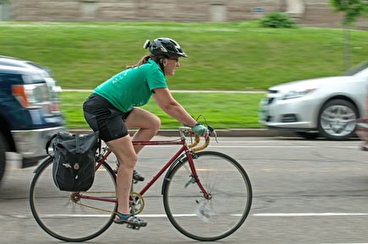Investments in biking routes continued to produce benefits in US metros during COVID-19 pandemic
Access Across America: Biking 2021 provides comparisons with pre-pandemic accessibility data from 2020 in ranking the 50 largest U.S. metros for connecting workers with jobs via bicycle. Transportation planners and policymakers can use these findings to better coordinate investments in bicycle facilities with the location of jobs and housing to improve job accessibility.
This year’s rankings are the first based on data collected after the onset of the COVID-19 pandemic. The direct and indirect impacts of COVID included altered travel behavior due to stay-at-home orders, economic changes, and especially greatly increased rates of telework. Reports of increased bike travel during this period emphasize the importance of understanding access by bike.
The study incorporates traffic stress and cycling comfort in its evaluation of access to destinations by bicycle. According to the study, low-stress routes are separated bike lanes and paths. Medium-stress routes include all bike infrastructure — including on-street unprotected bike lanes, certain shared lanes, and bicyclists mixing with traffic on some non-arterial streets.
Notable changes were observed in certain cities compared to the previous study: access to jobs by medium- and low-stress bicycle routes increased during the past year in only half of the top 50 metro areas. Access to jobs by medium-stress bicycle routes in #1 ranked Las Vegas rose by 16.5% and in #2 ranked Memphis by 10.7%. Among low-stress networks, Nashville ranked #1, with a 12% increase, and Sacramento ranked #2, with a 4.9% increase. Some other metro areas such as Seattle and Hartford experienced the opposite, with medium-stress and low-stress access dropping.
For the average-length bike commute, the Twin Cities ranks 10th nationally by low-stress bike access to jobs and 12th by medium-street access. On average, Twin Cities workers using medium-stress bicycle facilities can reach approximately 60,869 jobs within 30 minutes by bike.
The overall number of bicycle commuters has increased nearly 22% since 2010.

